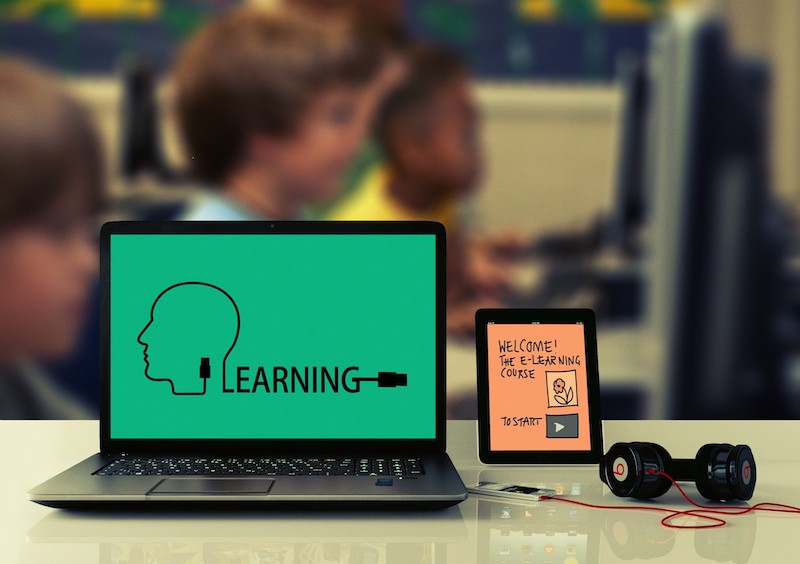The Future of E-Learning and How LMSs Fit into the Picture
E-learning has become a significant player in the education industry, with the market expected to reach $648 billion by 2030. Learning has always...

Did you know that as many as one in four people have some impairment that can make internet use difficult?
That's why accessibility must be a top priority for any website owner, and if you offer online training or e-learning, it's critical to address it so you don't stop learners from viewing your carefully-crafted training content.
But if you don't have a background in accessibility, it can feel like a complex area to navigate. That's why we've put together this guide. Read on as we explain everything you need to know about e-learning accessibility guidelines.
As a society, we are finally beginning to recognise that all of us matter equally, regardless of our background or physical self.
We also understand that having a disability should not be a reason to stop you from doing anything you want in life, whether travelling somewhere remote, taking part in an international sports event or becoming highly qualified with a PhD.
What's more, we are starting to see disability in a wider context, not only physical ailments but a broader spectrum of challenges many of us face when carrying out daily tasks.
Placing accessibility high on your list of requirements for your learning material shows you care and that your learners, whether they are association members, NPO volunteers, staff colleagues or customers matter to you.
When the word accessibility is used in the context of the internet, what's your initial thought?
Perhaps you think about making a website more usable for those with hearing loss or limited vision. Or maybe you think about making a website mobile-friendly.
However, accessibility encompasses a range of disabilities and non-disability features (which you might group as usability).
So before you start thinking about what to do with your e-learning content, you first need a comprehensive understanding of who you're helping by making you're learning platform and content more accessible.
There are lots of disabilities of varying degrees that make online browsing more challenging. Here are some you should know about:
Each of these has different challenges, as we'll explore. It's also worth noting that some of these may be temporary, others permanent. So it would help if you made your e-learning platform accessible to as many people as possible.
You'll also need to consider your user's non-disability needs for the e-Learning platform.
That might include:
As you can see, the more you understand the challenges, the more you can deliver the right solution. Good e-learning content should be accessible to as many people as possible.
Don't forget to check all the error messages on your website and learning content. You must ensure that all your users can read these error messages and continue browsing your site.
And remember to add support contacts if your learner runs into troublesome errors that stops them from accessing the rest of the learning content.
There's a long-standing body responsible for overseeing accessibility on the internet.
This body, called w3, offers official guidelines known as Wcag 2.0. This organisation keeps these guidelines updated and checked regularly, so it's worth reviewing them every few months to ensure that your website is still fully accessible one, three or ten years from now.
You should also check laws in your residing country, as many have legal accessibility stipulations for internet businesses especially in public or government domains.
The easiest way to address e-Learning is to keep an accessibility checklist. That will help you ensure all parts of your platform meet the proper standards for accessibility in educating others. Let's look at what you should include on this checklist:
It would help if you made images accessible to those with visual disabilities.
This approach is vital when the image relates to a teaching topic. Alt tags will allow you to describe the image. Make this as helpful and descriptive as possible for those who can't see it.
When writing, your priority is to communicate information as clearly as possible. From that perspective, you should write in simple language, targeting a low reading age score so that it's understandable to people with disabilities like dyslexia.
Online tools like Hemingway will give your text a reading age score, so use this before publishing written material online.
If your lessons need to include complex language or jargon, help your users by providing a glossary for any difficult words or acronyms. Put this link on each page so they can access it without leaving the main lesson content.
Page design must be simple, with highly contrasting colours. Use a free online tool to check whether your colour choice provides enough contrast for those with sight issues such as colour blindness.
Avoid intricate or small details, and make sure the design is well-centred on the page with plenty of white space. The overall feel should be minimal and uncluttered, without unnecessary information and extra links.
Technological advances mean we can now create fun and fancy animations - but that doesn't mean we should.
Flashing images, rotating galleries or gifs don't perform well from an accessibility point of view. So avoid using them unless they are critical to an online learning objective in your course.
Furthermore, flashing images could cause some people to experience seizures. If you must include flashing pictures or videos, provide a warning first.
You can present training material as an audio guide, video, text, and many other interactive ways like quizzes. But the best way to make your learning material accessible is to give your customer multiple options.
That means providing features like closed captioning for video content. And it also means adding other content formats like a full video transcript. The latter has a bonus as it will provide your customers with flexibility.
Suppose your customer doesn't have time to watch your video. In that case, they can download the text file to read later, perhaps when travelling on public transport when they can't access data-heavy video files.
Speaking of data, don't forget that not everyone will necessarily have fast broadband throughout the day. It's worth providing your customers with a download option for your learning material so they can access it offline.
When using video, make sure it's easy for the user to navigate this content by adding play, pause, skip and rewind buttons.
Confusing navigation is one of the top complaints for internet users. Though you might assume this is merely a usability issue, it impacts accessibility too.
Those with cognitive issues, for example, might find themselves stuck on a confusing navigation page and struggle to get to where they want to go.
The best way to create easy-to-follow navigation is to map it out on paper and run some usability tests (that involves getting someone to walk through the proposed structure and provide feedback).
There are a few simple rules to help your navigation work. First, use labels that are familiar to people. For example, "contact us" is better than "let's chat".
Secondly, avoid too many menu items for pages of content. Around eight is best.
Lastly, give people an easy link to return to the main menu and make that link obvious.
Headers are essential to everyone, especially for the visually impaired or anyone using text readers. These headers will ensure the text is easier to read.
So always use the correct format: H1 for the title, H2 for section headings, H3 for sub-headings and so forth. Don't use other formats such as colour or bold font instead of properly marked-up headings.
You can add narration to any additional text content in your learning area to assist visually impaired people. That ensures these users don't lose crucial contextual information.
Tables should only present data in a traditional table or spreadsheet format. Don't use them to format your text or images on the page.
It's not practical to build accessibility features manually for something as comprehensive as an e-learning platform.
You'll need tools. We've touched on a few of these already, but here is a list of tools that will help you make your e-Learning area more accessible:
Within Intuto, we have designed course templates with digital accessibility in mind. That means you can get started quickly and create a learning environment that is fully accessible.
Don't make accessibility an afterthought. Putting time and effort into learning about e-learning accessibility guidelines will ensure that your learning area is used and enjoyed by all your customers, whatever their challenges.
We also have developed an online course to help your learn more about how to making your e-learning accessible. You can access that course for free now by signing up here.

E-learning has become a significant player in the education industry, with the market expected to reach $648 billion by 2030. Learning has always...

One in six people worldwide has some form of disability. So it stands to reason accessibility should be a priority for any forward-thinking business.

There is no doubt that 2020 was a year that changed how people interact in many facets of life. One of those is the delivery of training. Technology...